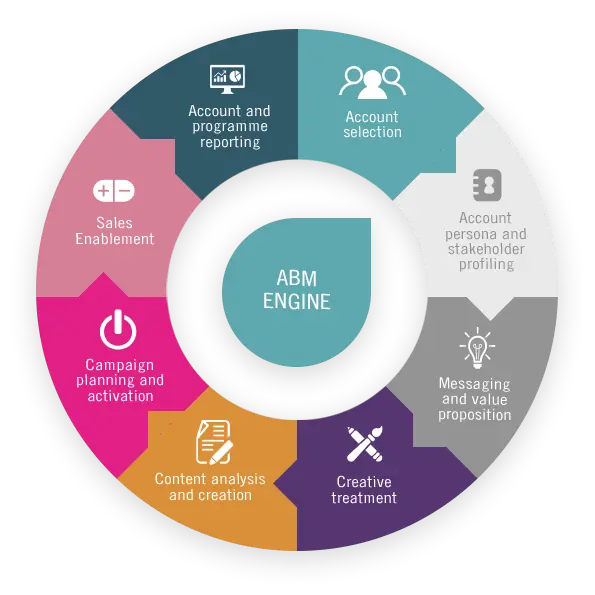6 min to read
By Bruno Gavino, CEO, Codedesign
The New Budget Reality
Every quarter I sit with B2B CMOs who tell me the same thing: “We need numbers, and we need them in one click.”
It’s no surprise, then, that eMarketer now shows martech soaking up a larger slice of B2B marketing budgets than search-engine optimization. Dashboards, automation flows, and AI cocktail-names promise speed. The board loves speed.
But there’s a quiet cost hidden in the line items we’ve started to trim—chief among them, SEO. Organic traffic doesn’t complain when paid budgets freeze, and it rarely shows dramatic spikes on a CFO slide. Yet it is still—after two decades—the cheapest, most trusting door into a prospect’s mind. Ignoring it is like building a Formula 1 engine and skipping the fuel efficiency test; thrilling until the tank runs dry.

Why the Pendulum Swings Toward Martech
-
Instant Feedback Loops
Martech platforms screenshot performance in real time. Red arrows trigger Slack pings, green arrows trigger celebrations. SEO, by nature, moves in seasons, not seconds. Patience is hard to fund. -
Headcount Pressure
A single platform can handle lead routing, nurturing, scoring, and reporting. Replacing ten processes with one subscription is an easy sell in a tight labor market. -
Attribution Politics
When everyone fights for credit, the channel with the neatest U-shaped model often wins. Organic discovery rarely fits cleanly into that diagram, so it quietly loses budget.
The Hidden Cost of Sidelining SEO
-
Traffic Inflation in Paid Channels
As organic rankings slip, paid cost-per-click trends upward. What looked like operational efficiency morphs into media dependency. -
Erosion of Credibility
Prospects hunt for unbiased answers long before they fill a form. If your brand isn’t on page one, your authority shrinks while competitors educate your market. -
Technical Debt
Search algorithms forgive slowly. A six-month hiatus in technical upkeep (crawlability, structured data, core web vitals) can take twice as long to reverse.
Balance Beats Bias: A Practical Formula
At Codedesign we use a rule of thumb for new engagements:
60 / 40 Split
60 % of incremental budget goes to martech and data activation; 40 % stays anchored in technical and content SEO.
The ratio flexes by industry, but the discipline does not. Whenever the split veers off course for three consecutive quarters, growth flattens within the year. We’ve plotted it too many times to ignore.

Scenario 1 – The Scale-Up That Sped Past Its Customers
A SaaS client grew ARR from €10 M to €35 M, fueled by an ABM platform that personalized ad creative on the fly. Six months in, the lead machine stalled.
Diagnosis: Their knowledge-base articles—once a magnet for mid-funnel queries—hadn’t been updated since migration to the new CMS. Crawl errors spiked. Organic sign-ups dipped 28 %.
Fix: We integrated log-file alerts into the same martech stack, set quarterly content sprints, and baked SEO tickets into the scrum board. Within two quarters, organic regained parity with paid leads, but at one-sixth the cost.
Scenario 2 – The Global Enterprise Lost in Translation
A manufacturing giant rolled out a multilingual demand-gen platform across 15 regions. Landing pages translated perfectly, but hreflang tags were missing and localized URL structures clashed with canonical rules. Google split authority across dozens of clones.
Outcome: High martech adoption, low search visibility—especially in APAC markets where paid CPCs were already punishing.
Solution: We used the same platform’s API to programmatically inject hreflang maps and surface duplicate content flags in real time. Organic sessions in Japan rebounded 40 % in six months, turning a sunk cost into a growth lever.

Four Moves to Keep Both Engines Running
-
Budget
Block out a non-negotiable SEO fund before approving the next platform license. Think of it as preventative maintenance for brand visibility. -
Tech Stack
Favor platforms with native SEO add-ons—crawl diagnostics, content briefs, schema validators. One login, two wins. -
Quarterly Checks
Marry martech’s agility with SEO’s patience. Review page-speed, index coverage, and keyword share every 90 days alongside your MQL pipeline. -
Cross-Training
Upskill automation specialists in on-page fundamentals, and vice versa. When teams speak a shared language, trade-offs turn into integrations.
Culture Matters More Than Software
The tools we buy reflect the culture we foster. If dashboards trump discovery at every meeting, SEO will atrophy no matter how many certificates the team holds. Conversely, a culture that applauds long-term gains gives martech context—it becomes a telescope, not a crutch.
At Codedesign we run “traffic source retros” every six weeks. Each channel owner—paid, organic, email—presents one risk their channel faces if another channel underperforms. It builds empathy and spotlight-shares by design.

Looking Ahead: Search, AI, and the Next Budget Cycle
Generative AI is reshaping how prospects query the web. Featured snippets are turning into full-sentence answers. Martech vendors are racing to plug large-language models into their suites; some will stick, many will clutter.
But even as AI rewrites snippets, it still feeds on optimised pages. No content, no context. The platforms you buy will automate, predict, and summarise—yet the raw material remains a crawlable, authoritative site.
Procurement’s Wake-Up Call: From Tools to Terms
In the same boardrooms where martech dashboards now glow brighter than SEO reports, a second spotlight has swung onto how those results are bought. It isn’t enough to know which levers work; the C-suite now wants proof that every euro spent on the lever is money that comes back.
That shift is being driven by an unexpected player: procurement.
The Problem No CMO Wants on the Slide Deck
-
Overhead disguised as “integration.” Agencies pad scopes with six different “specialist teams,” then bill for the hand-offs.
-
Pitch-only talent. The senior strategist you met in June? Gone by September, replaced by juniors you’ve never met.
-
Outputs over outcomes. A flurry of assets, zero lift in pipeline.
No wonder buyers are asking:
“Who actually shares our commercial ambition?”
“Who will sign up to revenue goals, not just deliverables?”
“Who can flex with our business and stay accountable?”
What Clients Want Now
Why the Timing Matters
- ROI pressure has never been higher. Martech’s real-time dashboards show waste instantly; finance teams notice.
- Legacy contracts are up for renewal. Multi-year retainers signed in “growth at all costs” days look flabby in a cost-control era.
- CFO scrutiny is intense. If the spend doesn’t ladder to revenue, it’s cut.
- CMOs need partners that drive business, not just brand. A glossy case study is nice; ARR is nicer.
My Strategic POV: Creativity Plus Commercial Credibility
The agencies that win from here will:
-
Price on outcomes. Fixed fees for brand work, variable fees for pipeline and revenue targets.
-
Deploy lean, senior teams. The people you meet stay on the account, reducing “integration overhead.”
-
Prove value quarterly. No hiding behind annual reviews; every 90 days the numbers tell the story.
Closing Argument
If martech gives you speed, SEO gives you stamina. One without the other is a sprint with no finish line—or a marathon run at walking pace.
As budgets tighten and AI promises multiply, resist the urge to treat SEO as yesterday’s playbook. Instead, weave it into the martech cloth:
-
Automate Reporting, Not Responsibility. Dashboards surface issues; humans solve them.
-
Let Paid Learn from Organic. Feed top-performing organic topics into ad copy and retargeting lists.
-
Invest Beyond Keywords. Technical soundness, user intent, and brand authority still move rankings, AI or not.
My advice, as someone betting on your lifetime customer value as much as on the next quarterly uptick: keep your toolkit sharp, but keep your compass set on organic trust. Speed and stamina win races together.
Bruno Gavino leads Codedesign, a global digital marketing agency helping companies scale demand with balanced, data-driven strategies.
 |
Thoughts by Bruno GavinoBruno Gavino is the CEO of Codedesign, a Lisbon-based digital marketing agency, with offices in Boston, Singapore, and Manchester (UK). He plays a pivotal role in shaping the agency's growth and direction, particularly in the realm of digital marketing. Codedesign has built a strong team of dedicated professionals, including marketers, developers, and creative thinkers, with a mission to help businesses grow online. Bruno's expertise extends to various aspects of digital marketing, and he has been active in sharing his insights on the impact of significant global events on the digital marketing landscape. His contributions to the field extend beyond his role at Codedesign. Bruno Gavino is known for his broad perspective on digital strategies and innovative solutions that drive the company's vision. |
 |
CodedesignCodedesign is a digital marketing agency with a strong multicultural and international presence, offering expert services in digital marketing. Our digital agency in Lisbon, Boston, and Manchester enables us to provide market-ready strategies that suit a wide range of clients across the globe (both B2B and B2C). We specialize in creating impactful online experiences, focusing on making your digital presence strong and efficient. Our approach is straightforward and effective, ensuring that every client receives a personalized service that truly meets their needs. Our digital agency is committed to using the latest data and technology to help your business stand out. Whether you're looking to increase your online visibility, connect better with your audience, get more leads, or grow your online sales. For more information, read our Digital Strategy Blog or to start your journey with us, please feel free to contact us. |
CodeDesign is leading:
- Digital Agency
- Digital Marketing Agency
- AI Marketing Agency




Add comment ×